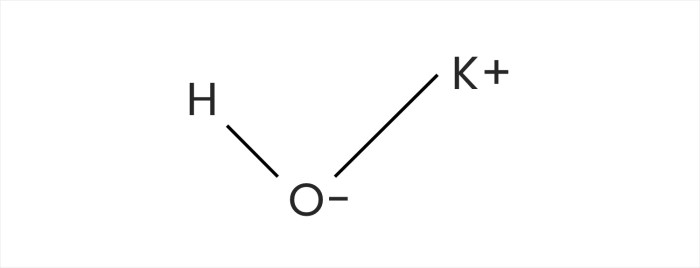Hydrofluoric acid and potassium hydroxide are two essential chemicals with distinct properties and applications. This comprehensive overview explores their chemical formulas, reactivity, industrial uses, safety precautions, and environmental impact, providing a thorough understanding of these versatile compounds.
Delving into the intricacies of hydrofluoric acid and potassium hydroxide, this discussion unravels their chemical structures, physical and chemical properties, and their interactions with various substances. Their reactivity and mechanisms are examined, showcasing their versatility in industrial processes.
Hydrofluoric Acid and Potassium Hydroxide: Chemical Properties

Hydrofluoric acid (HF) is a colorless, highly corrosive liquid with a pungent odor. It is the only acid that can dissolve glass. Potassium hydroxide (KOH) is a white, deliquescent solid that is highly soluble in water. It is a strong base that is used in a variety of industrial and household applications.
Chemical Formulas and Structures
- Hydrofluoric acid: HF
- Potassium hydroxide: KOH
The molecular structure of hydrofluoric acid is shown below:
H-F
The molecular structure of potassium hydroxide is shown below:
K-O-H
Physical and Chemical Properties, Hydrofluoric acid and potassium hydroxide
| Property | Hydrofluoric Acid | Potassium Hydroxide |
|---|---|---|
| Appearance | Colorless liquid | White solid |
| Odor | Pungent | None |
| Solubility in water | Miscible | Highly soluble |
| Density (g/mL) | 1.19 | 2.04 |
| pH | < 1 |
FAQs
What are the key differences between hydrofluoric acid and potassium hydroxide?
Hydrofluoric acid is a weak acid that is highly corrosive to glass and ceramics, while potassium hydroxide is a strong base that is highly soluble in water.
What are the main industrial uses of hydrofluoric acid?
Hydrofluoric acid is primarily used in the production of semiconductors, glass etching, and metal cleaning.
What safety precautions should be taken when handling potassium hydroxide?
Potassium hydroxide is corrosive and can cause severe burns. It should be handled with gloves, eye protection, and a respirator.



